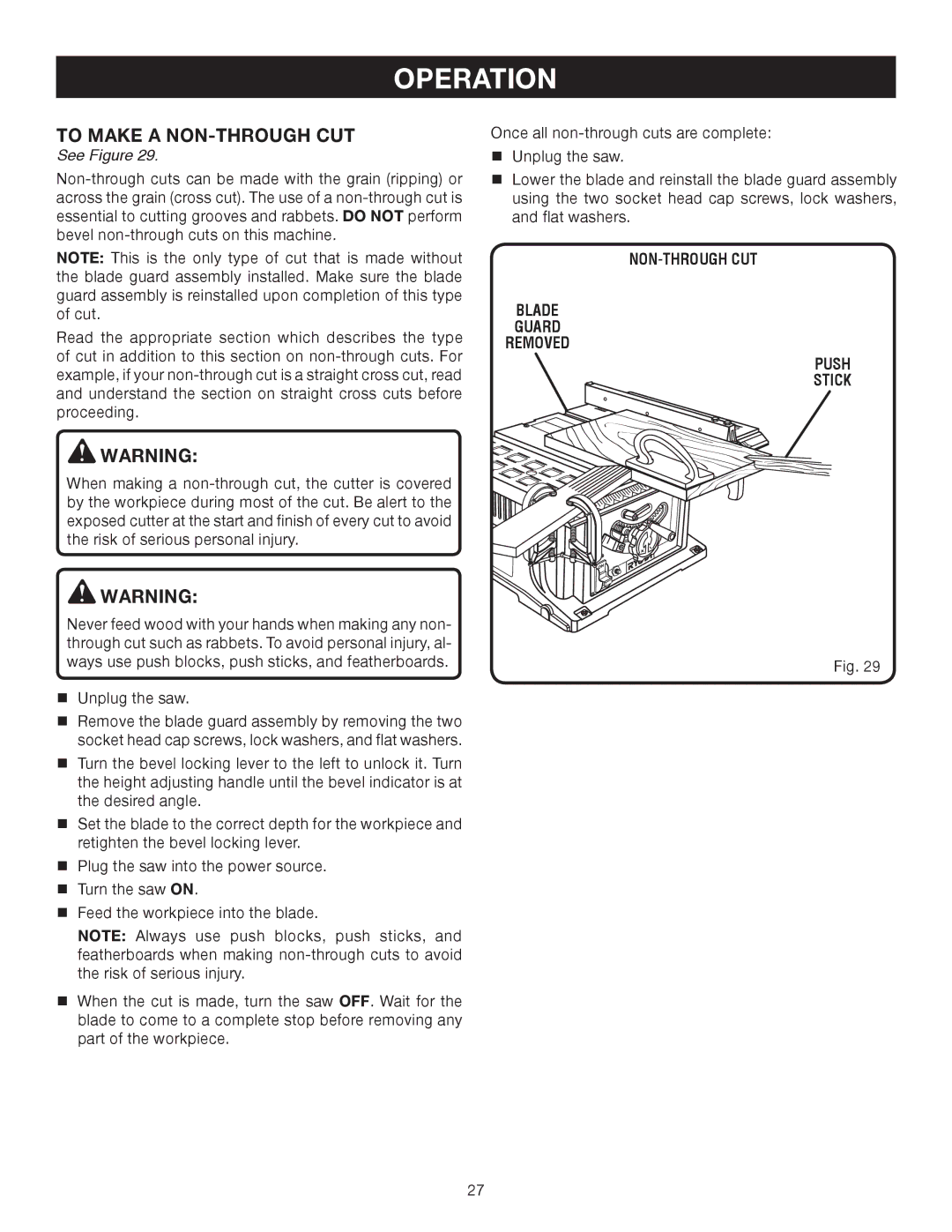BTS10 specifications
The Ryobi BTS10 is a high-performance table saw designed for both amateur woodworkers and seasoned professionals. Known for its powerful motor and solid construction, this table saw offers a blend of precision and convenience, making it an excellent choice for various woodworking tasks.One of the standout features of the BTS10 is its robust 15-amp motor, providing ample power to handle tough cutting jobs. This motor ensures that it can effectively rip through hardwoods and softwoods alike, delivering clean and accurate cuts. The tool has a no-load speed of 5000 RPM, allowing for quick and efficient cutting, which is particularly beneficial for large-scale projects.
The BTS10 comes equipped with a spacious 27-inch aluminum table that provides ample workspace, enhancing stability and control during cuts. The table’s surface is designed to be smooth, which minimizes friction and improves accuracy. Moreover, the saw features a cast iron trunnion system that enhances stability, further contributing to the precision of cuts.
For added convenience, the Ryobi BTS10 includes a built-in blade guard and anti-kickback pawls. These safety features are essential in preventing accidents and ensuring user safety during operation. Additionally, this model also incorporates an adjustable miter gauge, allowing users to make angled cuts easily. The miter gauge slides along the table’s slots for increased accuracy when making crosscuts.
The BTS10 also supports a bevel adjustment feature that allows users to tilt the blade up to 45 degrees. This capability is ideal for making bevel cuts, providing versatility for various woodworking applications. The blade height can also be adjusted easily using a convenient handwheel, enhancing user control over cut depth.
In terms of portability, the BTS10 is designed with user convenience in mind. Although it’s built for durability, it remains relatively lightweight, making it easier to transport to job sites or storage.
Overall, the Ryobi BTS10 table saw combines power, usability, and safety features, making it a versatile tool capable of handling a range of woodworking tasks. Whether you’re a hobbyist looking to expand your workshop or a professional seeking a reliable table saw, the BTS10 delivers the performance and features required for precision woodworking.

